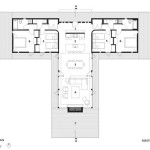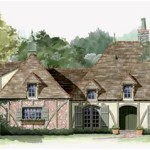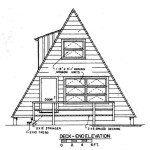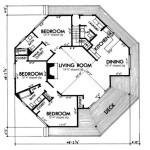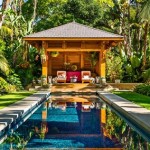Pool House Design Plans: A Comprehensive Guide to Creating Your Outdoor Oasis
Pool house design plans are a crucial aspect of creating a functional and aesthetically pleasing outdoor space. These plans provide a detailed outline of the structure, layout, materials, and amenities that make up the pool house, which serves as the central hub for relaxation and entertainment by the pool.
Pool houses offer numerous benefits, including providing a shaded area for respite from the sun, a convenient location for storing pool supplies and equipment, and a place for gatherings and socializing. Whether it’s a standalone structure or an extension of the main house, a well-designed pool house can enhance the enjoyment and value of your outdoor living space.
When designing your pool house, there are several key considerations to keep in mind:
- Size and Layout
- Materials and Finishes
- Roofing and Insulation
- Windows and Doors
- Lighting and Electrical
- Plumbing and Fixtures
- Storage and Equipment
- Outdoor Kitchen or Bar
- Fireplace or Fire Pit
By carefully considering these elements, you can create a pool house that is both functional and stylish, providing years of enjoyment for you and your family.
Size and Layout
The size and layout of your pool house will depend on several factors, including the size of your pool, the number of people you typically entertain, and the activities you plan to use the space for. If you envision using the pool house for large gatherings, you’ll need a larger space with ample seating and storage. If you primarily use the pool house for relaxation and sun protection, a smaller, more intimate space may be more suitable.
- Consider the traffic flow: Make sure the layout of your pool house allows for easy movement between the pool, the house, and other outdoor areas. Avoid creating bottlenecks or awkward transitions.
- Create designated areas: If your pool house is large enough, consider creating designated areas for different activities, such as a seating area, a dining area, and a storage area. This will help keep the space organized and functional.
- Maximize natural light: Position your pool house to take advantage of natural light. Large windows and skylights can help brighten the space and reduce the need for artificial lighting.
- Plan for outdoor living: Extend your living space outdoors by incorporating a patio, deck, or screened porch into your pool house design. This will provide additional space for relaxation, dining, and entertaining.
By carefully considering the size and layout of your pool house, you can create a space that is both functional and inviting, providing years of enjoyment for you and your family.
Materials and Finishes
The materials and finishes you choose for your pool house will have a significant impact on its durability, aesthetics, and overall functionality. Here are some key considerations:
Exterior Materials
The exterior materials of your pool house should be able to withstand the elements, including rain, sun, and wind. Popular choices include:
- Wood: Wood is a classic choice for pool houses, offering a warm and inviting look. However, it requires regular maintenance to protect it from moisture and rot.
- Vinyl: Vinyl is a low-maintenance option that is available in a variety of colors and styles. It is durable and resistant to fading and moisture.
- Fiber cement: Fiber cement is a composite material that is made from cement, wood fibers, and other materials. It is durable, fire-resistant, and moisture-resistant, making it a good choice for pool houses in areas with harsh weather conditions.
- Stone or brick: Stone or brick are excellent choices for pool houses that have a more traditional or rustic look. They are durable and low-maintenance, but they can be more expensive than other materials.
Roofing Materials
The roofing material you choose for your pool house should be able to withstand the elements and provide adequate insulation. Popular choices include:
- Asphalt shingles: Asphalt shingles are a cost-effective option that is available in a variety of colors and styles. They are relatively easy to install and maintain.
- Metal roofing: Metal roofing is a durable and long-lasting option that is available in a variety of styles. It is also fire-resistant and energy-efficient.
- Tile roofing: Tile roofing is a beautiful and durable option that is available in a variety of colors and styles. However, it can be more expensive than other roofing materials.
- Wood shakes or shingles: Wood shakes or shingles can give your pool house a rustic look. However, they require regular maintenance to protect them from moisture and rot.
Interior Finishes
The interior finishes of your pool house should be durable and easy to clean. Popular choices include:
- Tile: Tile is a durable and easy-to-clean option that is available in a variety of colors and styles. It is also water-resistant, making it a good choice for pool houses.
- Concrete: Concrete is a durable and low-maintenance option that can be stained or painted to match your dcor. It is also water-resistant and easy to clean.
- Wood: Wood can give your pool house a warm and inviting look. However, it requires regular maintenance to protect it from moisture and rot.
- Laminate flooring: Laminate flooring is a durable and easy-to-clean option that is available in a variety of colors and styles. It is also water-resistant, making it a good choice for pool houses.
Roofing and Insulation
The roofing and insulation of your pool house are important considerations that will affect the comfort and energy efficiency of the space. Here are some key points to keep in mind:
- Roofing materials: The roofing material you choose for your pool house should be able to withstand the elements and provide adequate insulation. Popular choices include asphalt shingles, metal roofing, tile roofing, and wood shakes or shingles.
- Roof pitch: The pitch of your roof will affect the amount of sunlight that is absorbed by the pool house. A steeper roof pitch will help to keep the pool house cooler in the summer, while a lower roof pitch will allow more sunlight to enter the space.
- Insulation: Insulation is important for keeping your pool house comfortable in both hot and cold weather. Be sure to insulate the roof, walls, and floor of your pool house to reduce heat loss and gain.
- Ventilation: Proper ventilation is important for preventing moisture buildup and mold growth in your pool house. Be sure to include vents in the roof and walls of your pool house to allow for air circulation.
By carefully considering the roofing and insulation of your pool house, you can create a space that is both comfortable and energy-efficient, providing years of enjoyment for you and your family.
Windows and Doors
Windows and doors play an important role in the functionality and aesthetics of your pool house. Here are some key considerations:
- Natural light: Windows allow natural light to enter the pool house, which can help to reduce energy costs and create a more inviting space. Be sure to place windows strategically to take advantage of natural light throughout the day.
- Ventilation: Windows and doors also provide ventilation, which is important for preventing moisture buildup and mold growth. Be sure to include windows and doors that can be opened to allow for cross-ventilation.
- Views: Windows can also provide beautiful views of the pool and surrounding landscape. Be sure to place windows in areas where you can enjoy the views while relaxing in the pool house.
- Security: Doors and windows should be secure to prevent unauthorized access. Be sure to choose doors and windows with strong locks and consider adding security features such as motion sensor lights and an alarm system.
By carefully considering the windows and doors of your pool house, you can create a space that is both functional and inviting, providing years of enjoyment for you and your family.
Lighting and Electrical
Proper lighting and electrical wiring are essential for the safety and functionality of your pool house. Here are some key considerations:
Interior Lighting
The interior lighting of your pool house should be bright enough to allow for safe movement and activities, but not so bright as to be uncomfortable. Consider using a combination of natural and artificial light to create a well-lit space. Natural light can be provided by windows and skylights, while artificial light can be provided by recessed lighting, pendant lights, and wall sconces. Be sure to use energy-efficient light bulbs to reduce energy costs.
Exterior Lighting
Exterior lighting is important for safety and security. Be sure to install lights around the perimeter of your pool house, as well as on the steps and walkways. You may also want to install underwater lights in your pool to create a beautiful and inviting atmosphere at night. Be sure to use weather-resistant light fixtures and bulbs to withstand the elements.
Electrical Wiring
The electrical wiring in your pool house should be done by a qualified electrician. Be sure to use properly sized wires and circuit breakers to prevent electrical fires. You should also install ground fault circuit interrupters (GFCIs) in all areas where there is water, such as the bathroom and kitchen. GFCIs help to prevent electrical shocks by shutting off the power if there is a fault in the circuit.
Outlets and Switches
Be sure to install plenty of outlets and switches in your pool house to accommodate all of your electrical needs. Place outlets in convenient locations for plugging in appliances, charging devices, and powering pool equipment. Place switches in easy-to-reach locations for controlling the lights and fans.
Plumbing and Fixtures
The plumbing and fixtures in your pool house are important considerations that will affect the functionality and comfort of the space. Here are some key points to keep in mind:
- Water supply: You will need to ensure that your pool house has an adequate water supply for all of the fixtures and appliances, including the sinks, toilets, showers, and pool equipment. Be sure to consult with a qualified plumber to determine the size of the water supply line that you will need.
- Drainage: You will also need to ensure that your pool house has proper drainage for all of the fixtures and appliances. Be sure to install drains in the floors and showers, and connect them to a drainage system that will carry the wastewater away from the pool house.
- Fixtures: The fixtures in your pool house should be durable and easy to clean. Popular choices for pool houses include stainless steel sinks, toilets, and showers. You may also want to install a drinking fountain or water dispenser in your pool house for convenience.
- Pool equipment: If your pool house is equipped with a pool, you will need to install the necessary plumbing for the pool equipment, such as the pump, filter, and heater. Be sure to consult with a qualified pool professional to determine the size and type of plumbing that you will need.
By carefully considering the plumbing and fixtures in your pool house, you can create a space that is both functional and comfortable, providing years of enjoyment for you and your family.
In addition to the above considerations, here are some additional tips for plumbing and fixtures in pool houses:
- Use water-saving fixtures to reduce water consumption and energy costs.
- Install a water softener to protect your plumbing fixtures and appliances from hard water damage.
- Consider installing a recirculating pump to keep the water in your pool clean and clear.
- Be sure to have your plumbing system inspected and serviced regularly by a qualified plumber to prevent problems.
Storage and Equipment
Adequate storage space is essential for keeping your pool house organized and clutter-free. Be sure to plan for storage of all of your pool supplies and equipment, as well as any other items you may want to store in the pool house, such as towels, floats, and toys. Here are some tips for planning storage space in your pool house:
- Built-in storage: Built-in storage, such as cabinets, shelves, and drawers, is a great way to maximize space and keep your pool house organized. You can use built-in storage to store pool supplies, equipment, and other items.
- Freestanding storage: Freestanding storage units, such as shelves, bins, and baskets, are another great way to add storage space to your pool house. Freestanding storage units can be moved around as needed, so you can customize the layout of your pool house to meet your needs.
- Overhead storage: Overhead storage, such as shelves and racks, is a great way to store items that you don’t use on a regular basis. Overhead storage can be used to store pool equipment, seasonal items, and other bulky items.
- Outdoor storage: If you have limited space in your pool house, you can also use outdoor storage solutions, such as sheds and storage containers. Outdoor storage solutions can be used to store pool equipment, chemicals, and other items that you don’t need to access on a regular basis.
In addition to storage space, you will also need to plan for the storage of pool equipment, such as the pump, filter, and heater. Pool equipment can be stored in a variety of ways, depending on the size and layout of your pool house. Here are some tips for storing pool equipment in your pool house:
- Dedicated equipment room: If you have a large pool house, you may want to dedicate a room to pool equipment. This will keep the equipment out of the way and make it easier to access for maintenance and repairs.
- Built-in equipment cabinets: Built-in equipment cabinets are another great way to store pool equipment. Equipment cabinets can be customized to fit the specific size and shape of your equipment, and they can be installed in a variety of locations in your pool house.
- Freestanding equipment stands: Freestanding equipment stands are a great way to store pool equipment in a smaller pool house. Equipment stands can be moved around as needed, so you can customize the layout of your pool house to meet your needs.
- Outdoor equipment enclosures: If you have limited space in your pool house, you can also use outdoor equipment enclosures to store pool equipment. Outdoor equipment enclosures are weather-resistant and can protect your equipment from the elements.
By carefully planning for storage and equipment in your pool house, you can create a space that is both functional and organized, providing years of enjoyment for you and your family.
Outdoor Kitchen or Bar
An outdoor kitchen or bar is a great way to add functionality and convenience to your pool house. It allows you to prepare and serve food and drinks without having to go back and forth to the main house. Here are some things to consider when planning an outdoor kitchen or bar for your pool house:
- Location: The location of your outdoor kitchen or bar is important. You want it to be close to the pool, but not so close that it gets splashed or wet. You also want it to be in a convenient location for guests to access.
- Size: The size of your outdoor kitchen or bar will depend on how many people you typically entertain. If you plan on hosting large gatherings, you will need a larger kitchen or bar with more cooking and serving space.
- Amenities: The amenities you include in your outdoor kitchen or bar will depend on your needs and budget. Some popular amenities include a grill, refrigerator, sink, and storage space. You may also want to include a dishwasher, ice maker, or pizza oven.
- Materials: The materials you use for your outdoor kitchen or bar should be durable and weather-resistant. Popular choices include stainless steel, granite, and concrete.
In addition to the above considerations, here are some additional tips for planning an outdoor kitchen or bar for your pool house:
- Use a grill that is designed for outdoor use. Gas grills are popular because they are easy to use and maintain. Charcoal grills are also popular, but they require more maintenance.
- Choose a refrigerator that is designed for outdoor use. Outdoor refrigerators are weather-resistant and can withstand the elements.
- Install a sink with running water. This will make it easy to clean up after cooking and serving food.
- Provide plenty of storage space for food, drinks, and cooking supplies.
- Use durable materials that are easy to clean and maintain.
- Consider adding a roof or awning to protect your outdoor kitchen or bar from the sun and rain.
By carefully planning your outdoor kitchen or bar, you can create a space that is both functional and stylish, providing years of enjoyment for you and your family.
Fireplace or Fire Pit
A fireplace or fire pit can be a great addition to your pool house, providing warmth and ambiance on cool evenings. Here are some things to consider when planning a fireplace or fire pit for your pool house:
- Location: The location of your fireplace or fire pit is important. You want it to be close to the pool, but not so close that it gets splashed or wet. You also want it to be in a safe location away from any flammable materials.
- Type: There are two main types of fireplaces: wood-burning and gas-burning. Wood-burning fireplaces provide a more traditional look and feel, but they require more maintenance. Gas-burning fireplaces are easier to use and maintain, but they may not provide the same ambiance as a wood-burning fireplace.
- Size: The size of your fireplace or fire pit will depend on the size of your pool house and the number of people you typically entertain. If you plan on hosting large gatherings, you will need a larger fireplace or fire pit.
- Materials: The materials you use for your fireplace or fire pit should be durable and weather-resistant. Popular choices include brick, stone, and concrete.
In addition to the above considerations, here are some additional tips for planning a fireplace or fire pit for your pool house:
- Use a fireplace or fire pit that is designed for outdoor use.
- Install a chimney or vent to allow smoke to escape.
- Provide a safe area for guests to sit around the fireplace or fire pit.
- Keep a fire extinguisher nearby in case of emergencies.
By carefully planning your fireplace or fire pit, you can create a space that is both inviting and safe, providing years of enjoyment for you and your family.










Related Posts

